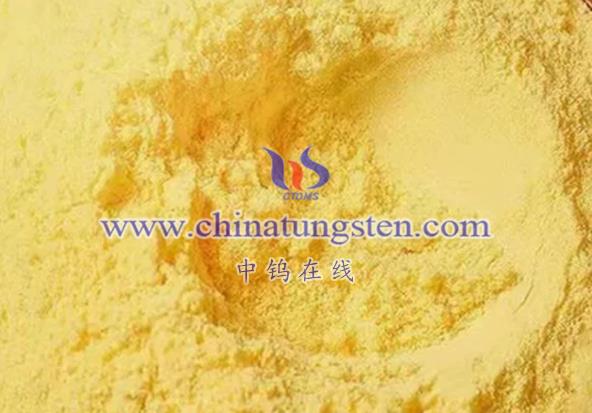
Tungsten oxide (WO3) multidimensional structure refers to various forms and structural characteristics exhibited by WO3 materials across different dimensions. According to current research and literature, tungsten oxide materials can be classified into the following main structures based on their dimensionality:
- Zero-Dimensional Structure of Tungsten Oxide
Definition of Zero-Dimensional Structure: A zero-dimensional structure typically refers to nanoparticles or particles at the nanoscale, where these particles or spheres have a finite size in all three spatial dimensions.
Characteristics of Zero-Dimensional Tungsten Oxide Nanoparticles: Zero-dimensional tungsten oxide nanospheres have a large specific surface area, allowing them to have more contact with organic pollutants, resulting in high degradation efficiency.
- One-Dimensional Structure of Tungsten Oxide
Definition of One-Dimensional Structure: One-dimensional structures mainly include nanofibers and nanotubes. These structures have significant dimension advantages in the length direction, while the size in the other two directions is relatively small.
Characteristics of One-Dimensional Tungsten Oxide Structures: Nanofibers and nanotubes have short diffusion distances and possess light scattering properties, which reduce the recombination of photogenerated electrons and holes, thus improving the efficiency of photoelectric conversion. One-dimensional structures perform excellently in electron transport and energy conversion, making them ideal materials for high-performance electronic devices and sensors.
- Two-Dimensional Structure of Tungsten Oxide
Definition of Two-Dimensional Structure: Two-dimensional structures refer to nanosheets or thin films, which have large dimensions in the plane but are extremely thin in the thickness direction.
Characteristics of Two-Dimensional Tungsten Oxide Structures: Two-dimensional nanosheets not only have a large specific surface area but also possess smooth surfaces and strong adhesion, which allows for good interaction with catalyzed substances during photocatalysis, improving photocatalytic efficiency. Two-dimensional structures have broad application prospects in flexible electronic devices, optoelectronic devices, and catalysis.
- Three-Dimensional Structure of Tungsten Oxide
Definition of Three-Dimensional Structure: Three-dimensional structures typically refer to those that are composed of nano-particles, nanowires, or nanosheets assembled into a 3D spatial network or framework.
Characteristics of Three-Dimensional Tungsten Oxide Structures: The special structure of three-dimensional interconnected frameworks provides effective diffusion pathways, leading to high carrier mobility and promoting the efficient separation of photogenerated electrons and holes. Three-dimensional structures perform excellently in energy storage, catalysis, and sensing, such as the application of three-dimensional grid-structured tungsten oxide nanomaterials in supercapacitors.
- Preparation Methods of Tungsten Oxide Multidimensional Structures
Various preparation methods for tungsten oxide multidimensional structures include but are not limited to hydrothermal methods, solvothermal methods, template methods, and electrospinning. These methods allow the control of reaction conditions, the addition of templates or structural guiding agents, and the formation of tungsten oxide materials with different morphologies and structures.
- Application Areas of Tungsten Oxide Multidimensional Structures
Tungsten oxide multidimensional structures have a wide range of applications across energy, environment, catalysis, and sensing fields. For example:
- In the energy sector, tungsten oxide nanowires can be used as electrode materials for lithium-ion batteries and supercapacitors.
- In the environmental sector, tungsten oxide nanomaterials can be used for photocatalytic degradation of organic pollutants and air purification.
- In the catalysis field, tungsten oxide nanomaterials can be used as catalyst supports or as catalysts themselves.
- In the sensing field, tungsten oxide nanomaterials can be used to develop highly sensitive gas sensors.
These multidimensional structures of tungsten oxide show extensive application potential in many fields, and with continued technological progress and deeper research, their application scope is expected to expand further.
More details of tungsten oxide product, please visit website: tungsten-oxide.com
Please contact CHINATUNGSTEN for inquiry and order of tungsten oxide:
Email: sales@chinatungsten.com
Tel.: 86 592 5129595

















